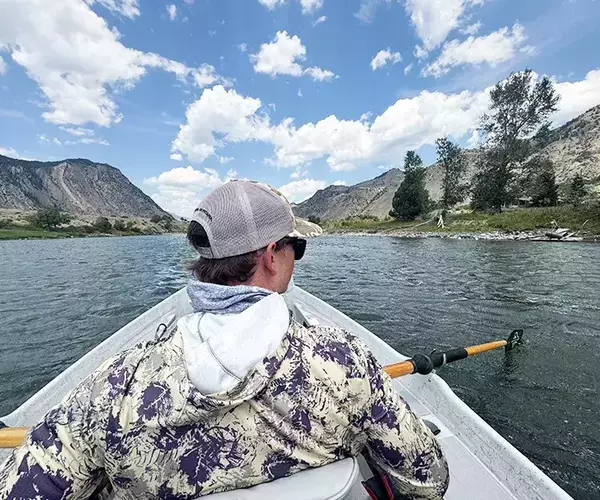Bozeman Fly Fishing Trip Packing Tips
Posted by: Alex
Date: 11/05/2025
When you’re planning a fly-fishing trip to Bozeman, what you bring matters. The weather can change fast, and having the right gear can make the difference between a comfortable day and a long one. These key items will keep you prepared for anything a Montana fishing day throws your way.
What to Bring for Your Guided Fly Fishing Trip
When you’re planning a fly-fishing trip to Bozeman, having the right gear makes all the difference. The weather can change fast, and comfort on the water is important. Bringing the right essentials will help you get the most out of your time in Montana.
1) Fishing Licenses
Before your trip, make sure you buy your Montana fishing license online. It’s simple to do through the Montana Fish, Wildlife & Parks website, and you can print it at home or keep a digital copy on your phone. Having your license ready saves time in the morning, especially before a guided trip when everyone’s getting gear loaded and heading for the river. It’s required for anyone 12 and older, and guides are required by law to check that each angler has one before fishing.
2) Polarized Sunglasses
A good pair of polarized sunglasses is one of the most important things to bring on any Montana fly-fishing trip. They protect your eyes from the sun and hooks, but more importantly, they let you see through the glare on the water. Being able to read depth, spot fish, and identify holding water gives you a real advantage.
3) Footwear
Footwear is one of the most common questions we get from guests before their trip. The best answer depends on the time of year and the type of fishing you’re doing. For float trips in the summer, sandals or flip-flops work great—something comfortable that you don’t mind getting wet. Just avoid anything too bulky or hard-soled, since you’ll be in and out of the boat throughout the day.
Chacos or Tevas are a favorite for many anglers because they have good ankle support, dry fast, and give you enough grip if you’re doing a little light wading or walking along the riverbank. If you’re fishing in cooler weather, opt for closed-toe shoes or light wading boots to keep your feet warm and protected. Whatever you choose, make sure they’re broken in and comfortable—your feet will thank you after a full day on the water.
4) Hats, Sunscreen, and Sun Protection
The sun in Montana can be intense, especially on the water. A hat with a brim—anything from a standard ball cap to a wide-brim fishing hat—helps cut glare and protect your face. Sunscreen is essential for your hands, neck, and any exposed skin, even if you’re wearing a long-sleeve sun hoodie. A buff or lightweight neck gaiter is also worth packing for keeping the sun off your neck and ears throughout the day.
5) Layering for Montana Weather
Montana weather doesn’t follow rules. It’s not unusual to start a morning at 40 degrees and end the day in the high 70s. The key is layering. Lightweight, breathable shirts and quick-dry pants are ideal for summer, while a warm mid-layer or fleece is perfect for cooler mornings and evenings. Always pack a windbreaker or rain jacket—afternoon storms can roll through fast, and the wind can pick up without warning. In the spring and fall, bring extra warm clothing. A warm hat, fingerless gloves, and thick socks make a big difference when temperatures drop. If you’re fishing late in the season, you’ll be thankful for every extra layer you packed.
6) Small but Useful Extras
There are a few extra things that always come in handy:
- Fingerless gloves – great for cold mornings when you still need dexterity.
- Hand warmers – lifesavers during late fall or early spring trips.
- Dry bag – keeps your phone, wallet, or camera safe from water.
Tips on Packing For A Bozeman Fly Fishing Day Trip
All guided fly fishing trips with Fins and Feathers Guide Service include complimentary use of gear like rods, reels, flies, and terminal tackle. Waders and wading boots are provided when conditions call for them, typically only in the spring and late fall as most of our fishing is done from drift boats or while wet wading in the summertime.
Review our recommended packing list which is included in confirmation emails and guided trip booking packets for a comprehensive packing guide. If you are interested in bringing your own gear, check out our gear guide to learn more about our top fly fishing equipment picks for the region.









